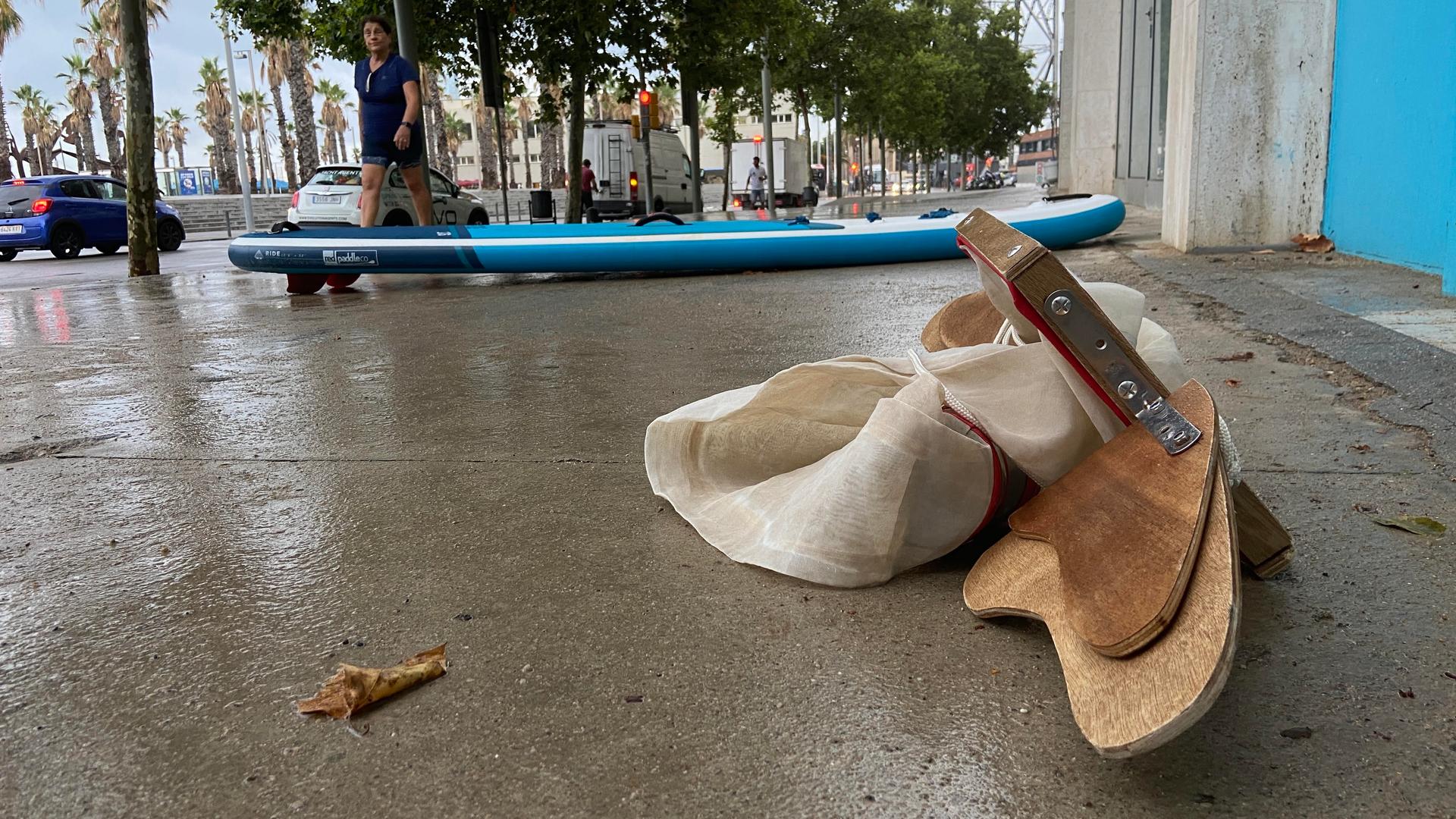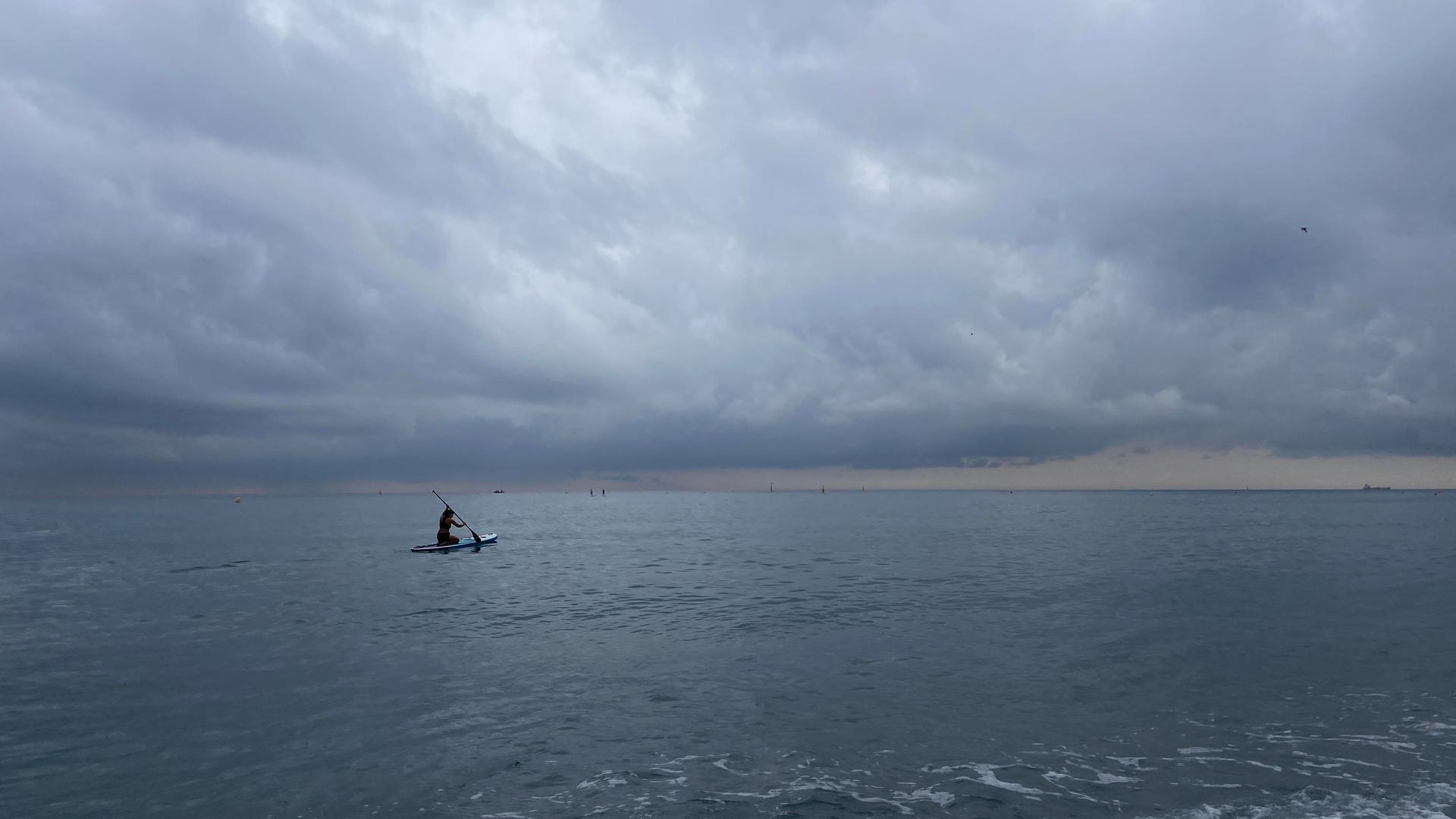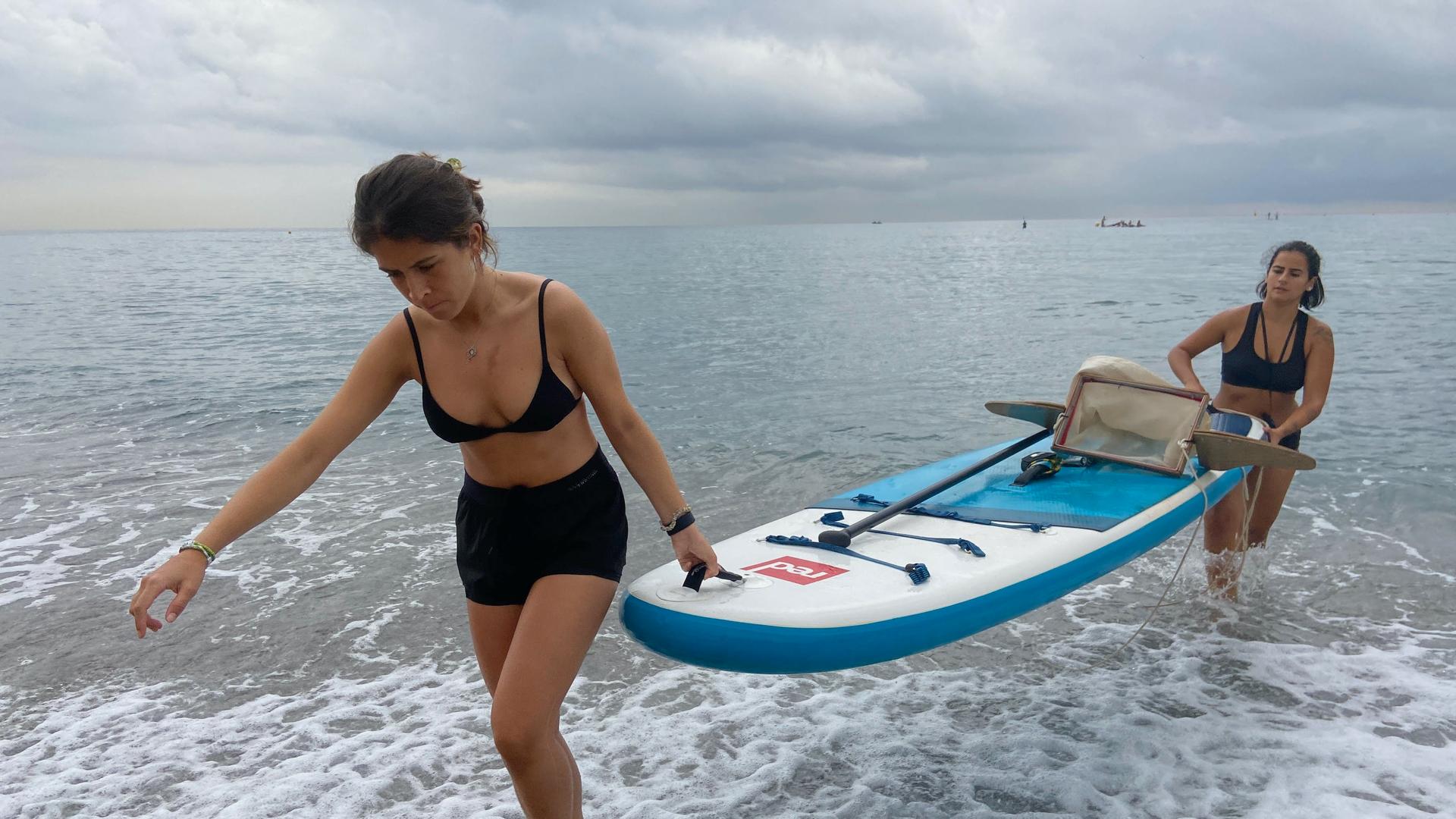Surfing scientists in Spain are hunting down microplastics
On a recent dawn on the beach in Barcelona, the sky was black with thunder clouds. It was hardly beach weather, but a couple of vacationing students, Carlota Mateu and Mireia Gonzalez, rented paddle boards anyway.
Mateu unfurled something that looked like a mesh windsock, with a wooden yoke at the wide, open end.
“You just unroll it and clip it to your board with this carabiner and you tow it, floating, behind the board,” she said.
As Mateu paddled, the contraption filtered sea water, catching something you might not notice: tiny filaments and beads of microplastic.

Plastic is everywhere. Scientists have found the stuff in just about every corner of the planet, even through the high seas. But getting a better understanding of what’s going on here, where the plastic waste comes from, and what it is, can still be challenging. That’s especially true along shallow coastlines.
That’s why hundreds of sea-lovers are taking to the western Mediterranean this summer to kayak, surf — and, it turns out, hunt for microplastics. The program, Surfing for Science, is part of a citizen science project where volunteers collect and share data with investigators who are often too busy for extensive field work.
“This really interests me because it’s a way to help with a huge problem close to where I live,” Mateu said.
And with that, she turned on her telephone GPS app and paddled off, the plastic trawl in tow. It looked like she was being followed by a small, white shark with wooden jaws.
It’s a curious sight for the few folks on the sand this early. Carlos Silva, a.k.a. Arkanoh, a rapper from Venezuela, was downing his last beer after an all-nighter with friends. They’d been watching Pinella and Gonzalez, and wondering.
“Microplastics are interesting,” he said. “You know, last I heard, there are microplastics in our drinking water.”
“It’s true,” said his friend Samuel Insesi, a sushi chef originally from Senegal. “Plastic is everywhere. Especially in Africa,” he said. “It is going to affect all of our lives.”
Soon enough, Mateu returned to the beach to make sure the trawl was working.
“This is what’s great about citizen science,” she said. “It draws in the general public even if they don’t understand the technical aspects of the science.”
But it turns out those two observing from the beach were spot on.
“We’ve already collected some microplastic. They appear to be from plastic bottles, but they need to be analyzed,” Mateu said, lifting the little catch-pouch.
The analysis happens just up the hill, in a lab at the University of Barcelona. Volunteers drop off their samples, and oceanographer Anna Sanchez studies them under a microscope and counts them one by one.

“What we found is that there’s a lot of plastic on the near shore,” she said. “In beaches here in the western Mediterranean, we found more plastic near big cities such as Barcelona. And we found also a big role for the old breakers and the ports as plastic-trapping areas.”
That’s where the plastic is. But Sanchez is also studying their origins. There are the usual suspects: A red speck is most likely from the top of a Coca-Cola bottle. Transparent white strands come from one-use shopping bags. Then, there are some surprises.
“Yes, it was like, what are these polyethylene green filaments?” she said. “And then, we realized that that’s artificial turf,” for sports fields.
“Everybody uses artificial turf for decoration, and for playing sports,” she said. “And in the end, it’s plastic.”
Sanchez said that even if all plastic manufacturing was halted tomorrow, levels in the oceans would rise for decades as waste continues to wash to the sea.
“The most important thing, I think is [for] people to realize the scale,” she said. “There’s a sample taken from October last year where we found 45 species of plastic in each square meter. That’s a huge amount of plastic.”
And it’s a huge amount of work to classify it all. Without the volunteer help, Sanchez said, she’d be light years behind in identifying microplastics — the first step needed for actually getting rid of them.
